Well, guess what? I'm going to narrate a documentary for Youtube using this TL as the script. It'll have video, pictures, maps, everything. Cheers! 
You are using an out of date browser. It may not display this or other websites correctly.
You should upgrade or use an alternative browser.
You should upgrade or use an alternative browser.
American King
- Thread starter Napoleon53
- Start date
Well, guess what? I'm going to narrate a documentary for Youtube using this TL as the script. It'll have video, pictures, maps, everything. Cheers!
Are you god?
American King Documentary preview:
http://www.youtube.com/watch?v=cyGyZKikP-w
Working on new chapters now. I'm gonna start full-fledged movie production until I get to Chapter 20.
http://www.youtube.com/watch?v=cyGyZKikP-w
Working on new chapters now. I'm gonna start full-fledged movie production until I get to Chapter 20.
Danke. Working on them now.
if you need some photshoped images, don't hesitate to ask.
if you need some photshoped images, don't hesitate to ask.
Thanks, man! I'd love some.
Could you 'shop that pic of the Tom Thumb railroad engine from the last chapter? I'd like the text to read: Hezekiah William's "Chicken Hawk" Engine 1820 Philadelphia R. R.
Could you do that? I'd appreciate it.
Last edited:
CHAPTER XV
The Old King is Dead, Long Live the King
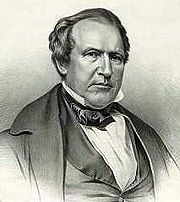
King Andrew II, The Enlightened, Andrew Jackson Donelson, Grand Duke of New York, Crowned King in 1845
The Old King is Dead, Long Live the King

King Andrew II, The Enlightened, Andrew Jackson Donelson, Grand Duke of New York, Crowned King in 1845
King Andrew had lost some of his ruggedness by 1840, when he began planning a network of transcontinental railroads and was watching the USLA flounder in despotism, tyranny, and bankruptcy, much like Spain, its old mother country, was. The URAS, he claimed, needed to be united firmly as one whole, not various states simply promising to be loyal to the monarch and actually disliking the other regions. By the time Andrew I died, rails had been built all the way to the Rockie Mountains. Settlers were making the final push to unite East and West. Cities like San Fransisco struggled to get their products to the Eastern Seaboard. Finally, it was about to change.
Massive companies and government organizations sponsored this drive westward. The Indians were forcibly settled or imprisoned by the army and the bandits and outlaws remained one of the few threats aside from cold and heat. Massive herds of majestic buffalo were hunted and their hides sold in the east. A year before he died, Andrew I made the only trip past the Mississippi of his reign. He was awe-struck by the thousands upon thousands of buffalo, and announced that the buffalo would become his official emblem on his heraldry.
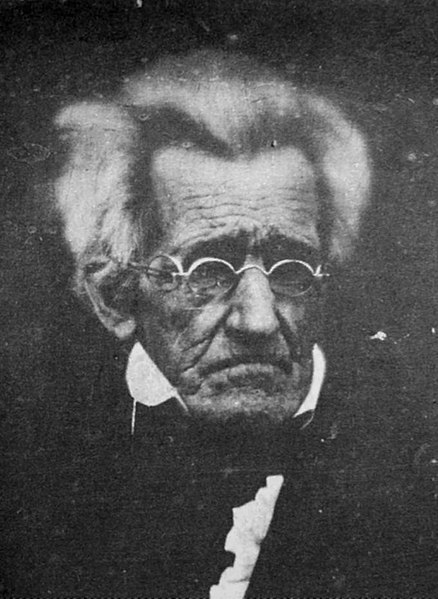
King Andrew I in 1845, just months before his Death
One year later, on June 8th, 1845, Andrew I, the Great, was dead. His 46 year-old nephew, Andrew Jackson Donelson, Andrew II, Grand Duke of New York, was crowned in Coronation Hall. No one was sure how he would fare, but he soon showed himself to be kinder than his father. He stopped the Indian prisons and asked them to integrate into society or move into reservations in the state of Madison. Of course, he did not allow uprisings or warpaths, and was determined to use the army to his best ability to crush hostiles.
Andrew II's brother, Viscount Daniel I, had a son named Viscount Ezekiel I, an eligible bachelor of 20 years of age, who was thought of as the man who would legitimize the American monarchy forever by marrying into a European royal family. When he started to turn on the charm to the newly-crowned Queen Victoria, many Britons were at first outraged, but then thought they might be able to use it to their advantage. A marriage between Ezekiel and Victoria could allow Britain to influence America once again. With enough work, one of Victoria's children might one day sit on the American throne. Another possibility was Andrew II's son, Grand Duke Andrew Jackson Donelson, II, future Andrew III, would marry the daughter of King Louis-Joseph I of France. King Louis-Joseph was the son of Louis XVI, who had died in 1839 at the age of 85. Louis-Joseph was now 64 himself, but thanks to his young second wife, a German duchess named Sophie, his daughter Marie was plenty young enough for Andrew III.
But what, it was said, if Ezekiel married Victoria, and Andrew III married Marie? A political union of America, France, and Britain would result. Britain hated this idea, as did France, so pipe dreams of an Anglo-American-Franco alliance were snuffed out quickly. It was one or the other, and France was more powerful than Britain. Andrew III was to marry Marie. A Frenchwoman would sit on the smaller throne of the Union, but there was really no chance American blood would "contaminate" the French royal family. It was a win-win for Louis-Joseph and the dauphin, the future Louis XVII, who had plans for continuing his father's African and Asian colonialism, and America's king being Louis XVII's brother-in-law would likely be of huge assistance and would maintain the firm alliance between the two countries. On May 9th, 1846, Andrew Jackson Donelson II was married to Princess Marie in the same Episcopalian church that George Washington's funeral had been held in. Marie was, of course, an Episcopalian now, as was the habit of nobility to convert to the religion of their husbands. Among those in attendance were the elderly former viscount and prime ministers William Henry Harrison and Napoleon Bonaparte. After Harrison had retired, Bonaparte had been a hugely successful prime minister himself. His nephew and namesake Louis Napoleon Bonaparte, who had been born an American citizen and was carving his own career in politics, was also present and was a close friend of King Andrew II. French nobles were there, but it was predominantly American.
After much ado, things slowly went back to normal. King Andrew II turned his sights back to the railroads.

Grand Duke Andrew Donelson II in a North Carolinian Uniform
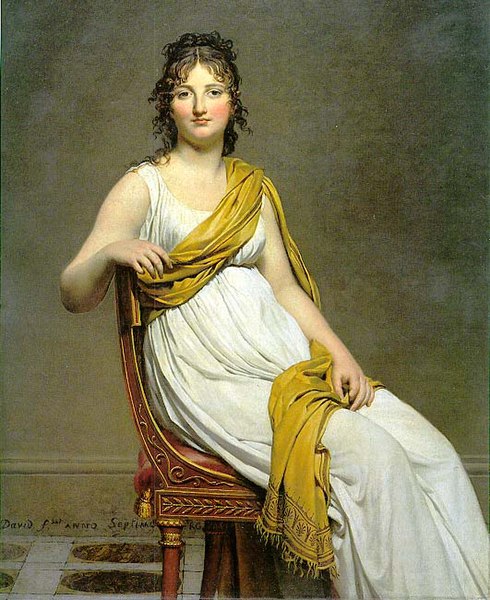
Grand Duchess Marie in the typical French mid-1800's Greek-style also popular in the URAS
CHAPTER XVI
Total Union and Gold Fever

The Thundering Buffalo, the first railroad engine to go from coast-to-coast
Massive companies and government organizations sponsored this drive westward. The Indians were forcibly settled or imprisoned by the army and the bandits and outlaws remained one of the few threats aside from cold and heat. Massive herds of majestic buffalo were hunted and their hides sold in the east. A year before he died, Andrew I made the only trip past the Mississippi of his reign. He was awe-struck by the thousands upon thousands of buffalo, and announced that the buffalo would become his official emblem on his heraldry.

King Andrew I in 1845, just months before his Death
One year later, on June 8th, 1845, Andrew I, the Great, was dead. His 46 year-old nephew, Andrew Jackson Donelson, Andrew II, Grand Duke of New York, was crowned in Coronation Hall. No one was sure how he would fare, but he soon showed himself to be kinder than his father. He stopped the Indian prisons and asked them to integrate into society or move into reservations in the state of Madison. Of course, he did not allow uprisings or warpaths, and was determined to use the army to his best ability to crush hostiles.
Andrew II's brother, Viscount Daniel I, had a son named Viscount Ezekiel I, an eligible bachelor of 20 years of age, who was thought of as the man who would legitimize the American monarchy forever by marrying into a European royal family. When he started to turn on the charm to the newly-crowned Queen Victoria, many Britons were at first outraged, but then thought they might be able to use it to their advantage. A marriage between Ezekiel and Victoria could allow Britain to influence America once again. With enough work, one of Victoria's children might one day sit on the American throne. Another possibility was Andrew II's son, Grand Duke Andrew Jackson Donelson, II, future Andrew III, would marry the daughter of King Louis-Joseph I of France. King Louis-Joseph was the son of Louis XVI, who had died in 1839 at the age of 85. Louis-Joseph was now 64 himself, but thanks to his young second wife, a German duchess named Sophie, his daughter Marie was plenty young enough for Andrew III.
But what, it was said, if Ezekiel married Victoria, and Andrew III married Marie? A political union of America, France, and Britain would result. Britain hated this idea, as did France, so pipe dreams of an Anglo-American-Franco alliance were snuffed out quickly. It was one or the other, and France was more powerful than Britain. Andrew III was to marry Marie. A Frenchwoman would sit on the smaller throne of the Union, but there was really no chance American blood would "contaminate" the French royal family. It was a win-win for Louis-Joseph and the dauphin, the future Louis XVII, who had plans for continuing his father's African and Asian colonialism, and America's king being Louis XVII's brother-in-law would likely be of huge assistance and would maintain the firm alliance between the two countries. On May 9th, 1846, Andrew Jackson Donelson II was married to Princess Marie in the same Episcopalian church that George Washington's funeral had been held in. Marie was, of course, an Episcopalian now, as was the habit of nobility to convert to the religion of their husbands. Among those in attendance were the elderly former viscount and prime ministers William Henry Harrison and Napoleon Bonaparte. After Harrison had retired, Bonaparte had been a hugely successful prime minister himself. His nephew and namesake Louis Napoleon Bonaparte, who had been born an American citizen and was carving his own career in politics, was also present and was a close friend of King Andrew II. French nobles were there, but it was predominantly American.
After much ado, things slowly went back to normal. King Andrew II turned his sights back to the railroads.
Grand Duke Andrew Donelson II in a North Carolinian Uniform

Grand Duchess Marie in the typical French mid-1800's Greek-style also popular in the URAS
CHAPTER XVI
Total Union and Gold Fever
The Thundering Buffalo, the first railroad engine to go from coast-to-coast
In 1848, the East and West Coasts were finally linked by rail. Citizens could now board a train in Philadelphia and arrive in San Fransisco. The Union was now exactly as Andrew I had wished: One Country.
It was quite convenient, then, that in 1849, gold was found in California. The scramble that followed was unbelievable. Tens of thousands came to California and Oregon to mine, triggering the final wars between the whites and Native Americans. Many became fabulously wealthy, but many died in poverty, penniless and destitute. The western economy, however, skyrocketed. Western "Dukes" started running huge railroad, boat, stock, and trade companies. The Dukes were not really nobility, but they lived like it. Massive mansions bedecked Southern California. New canals and waterways were made with cheap Hispanic labor forces fleeing the USLA's civil war which had been engulfing Mexico and South America since Bolivar's death in 1839. Santa Ana had tried to cling to power, but he had to go into self exile in New York, where he died in poverty.
The decline of slavery was dramatic. Preachers had succeeded in convincing many Southerners that it was cheaper to pay Hispanics wages than to provide everything for slaves, along with being more assured of morality. Hispanics were becoming a substantial minority in the URAS, a fact which angered many Protestants. But at the end of the day, cheap labor won out over denominational disputes. The Hispanics were the primary laborers in the country till well into the 20th century.
The North-West area of the country (Madison, Cascadia, Jacksonia, and Columbia) remained sparsely populated. King Andrew II's Indian reservations there did terribly, and the Native Americans lived in abject poverty. Things so deteriorated that, in 1855, the Blue Moon Rising occurred, when a Sioux chief named Blue Moon led an army of braves against the Royal Cavalry. This gave the Union an excuse to follow a Jacksonian program of destruction, when the Cavalry sacked many reservations, murdered the Indian men, raped the women, and burned down the farms. This went down as the blackest page on Andrew II's history. His marshals and generals hoped that it would intimidate the Indians into submission. It did not. The Indians joined together and fought back, turning Cascadia and Madison into a hostile wilderness. Several thousand soldiers were slain, and entire frontier towns were burned in revenge for the reservation uprisings. By 1860, the "uprising" had been mostly quelled, but pockets of hostility continued. Andrew II had set back American-Indian relations back a generation. When he died in 1868, he said he regretted that conflict more than anything else in his reign.
To be continued...
Don't worry, I'm not going to skip all the way to 1868 now! I'm going to go back and write about all the political and internal developments in the URAS during Andrew II's reign, along with a list of PM's and Viscounts.
I'm going to go back and write about all the political and internal developments in the URAS during Andrew II's reign, along with a list of PM's and Viscounts.
It was quite convenient, then, that in 1849, gold was found in California. The scramble that followed was unbelievable. Tens of thousands came to California and Oregon to mine, triggering the final wars between the whites and Native Americans. Many became fabulously wealthy, but many died in poverty, penniless and destitute. The western economy, however, skyrocketed. Western "Dukes" started running huge railroad, boat, stock, and trade companies. The Dukes were not really nobility, but they lived like it. Massive mansions bedecked Southern California. New canals and waterways were made with cheap Hispanic labor forces fleeing the USLA's civil war which had been engulfing Mexico and South America since Bolivar's death in 1839. Santa Ana had tried to cling to power, but he had to go into self exile in New York, where he died in poverty.
The decline of slavery was dramatic. Preachers had succeeded in convincing many Southerners that it was cheaper to pay Hispanics wages than to provide everything for slaves, along with being more assured of morality. Hispanics were becoming a substantial minority in the URAS, a fact which angered many Protestants. But at the end of the day, cheap labor won out over denominational disputes. The Hispanics were the primary laborers in the country till well into the 20th century.
The North-West area of the country (Madison, Cascadia, Jacksonia, and Columbia) remained sparsely populated. King Andrew II's Indian reservations there did terribly, and the Native Americans lived in abject poverty. Things so deteriorated that, in 1855, the Blue Moon Rising occurred, when a Sioux chief named Blue Moon led an army of braves against the Royal Cavalry. This gave the Union an excuse to follow a Jacksonian program of destruction, when the Cavalry sacked many reservations, murdered the Indian men, raped the women, and burned down the farms. This went down as the blackest page on Andrew II's history. His marshals and generals hoped that it would intimidate the Indians into submission. It did not. The Indians joined together and fought back, turning Cascadia and Madison into a hostile wilderness. Several thousand soldiers were slain, and entire frontier towns were burned in revenge for the reservation uprisings. By 1860, the "uprising" had been mostly quelled, but pockets of hostility continued. Andrew II had set back American-Indian relations back a generation. When he died in 1868, he said he regretted that conflict more than anything else in his reign.
To be continued...
Don't worry, I'm not going to skip all the way to 1868 now!
Tsao
Banned
snip
Epic! I predict that the URAS will die violently when it falls (assuming it falls). I await more updates!
He was awe-struck by the thousands upon thousands of buffalo, and announced that the buffalo would become his official emblem on his heraldry
Methinks i see a protected species in the United States now. Kind of reminds me of the Robin Hood/English mythos of the "Kings Deer". We instead, have the Kings Buffalo.
This might actually be a good thing,
Methinks i see a protected species in the United States now. Kind of reminds me of the Robin Hood/English mythos of the "Kings Deer". We instead, have the Kings Buffalo.
This might actually be a good thing,
Exactly what I was thinking!
Epic! I predict that the URAS will die violently when it falls (assuming it falls). I await more updates!
Thanks, mate! Of course, every nation eventually falls...
*sly*
CHAPTER XVII
The Enlightened Reign of Andrew II
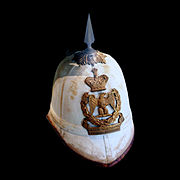
Californian Royal Pith Helmet (Model 1860) that saw service in the Indochina War
The Enlightened Reign of Andrew II

Californian Royal Pith Helmet (Model 1860) that saw service in the Indochina War
King Andrew II's reign (1845-68) was characterized by minimal international disputes and great prosperity, building upon what his uncle had established. He was decidedly different from Andrew I in the ways he treated Native Americans and in his promotion of technology and science, rather than territorial expansionism.
Andrew II tried to make the most of the Union's natural resources. Beginning in 1849, during the Californian Gold Rush, he had several royal mining companies exploit many gold veins, adding millions upon millions of dollars to the treasury. Using some of this new wealth he built several steamships to go to the Pacific and begin trade with India and China. The ships brought back spices, silk, and railroad workers. The spices were sold to Europe, the silk was used in the Union itself, and the workers built more railroads to promote the migration of settlers west.
These visits to China and India did not always go well. In the summer of 1856, hostile Indians attacked and destroyed the R.U.S. Ticonderoga while it was docked in Bengal. The act caused huge outrage that forced the British owners of Bengal to have a mass execution.
After the collapse of British naval power in favor of France, France had set out to conquer colonies for itself. France, Austria, Prussia, Spain, and Germany started carving up China. France offered to help establish an American colony on the border with Indochina. In the only act of territorial expansion in his reign, in 1860 Andrew II ordered an army made up mainly of Californians to invade Indochina and set up the colony of Vietnam. Marshal law was declared and the military governor, John D. Sloat, a commodore and former military governor of California, ruled with an iron fist. What America could not control France was welcome to take. And it did.
Back in Philadelphia, King Andrew II had finished construction of several large monuments and buildings. The palace had been reorganized. As the government had expanded an unbelievable amount, a new building was constructed for Congress and the other offices. The old rooms and chambers were now solely in the royal family's possession. Parisian architects and Italian painters were sent in to decorate the palace in the style of Versailles or the Vatican. Massive Chinese silk banners bearing the Jacksonian Buffalo emblem were draped on the four turrets of the "castle." The central clock tower was bedecked in gold from California. In front, a massive fountain was built with a statue of Andrew I on top. It would become world famous as an example of the former colonies' new-found fabulous wealth.
Grand Duke Andrew III, essentially ruling New York City, proved himself a competent administrator. Andrew III maintained control of own elite New York regiments, won over the populace, and enforced the law. He also, unlike when his father was Grand Duke, served many times as an ambassador to Europe. He and Grand Duchess Marie made ten trips to Germany alone, and another eight to Russia.
Also, during the rule of Andrew the Enlightened style changed drastically, and American tastes influenced France, Germany, Spain, and even Russia. Under Andrew I, powdered wigs were finally discarded, and by Andrew II's time, long pants, short hair, and bicornes were the fashion, even for civilians. Women became infatuated with France and America's new obsession with Greek fashion and began sporting simple hairstyles and long, loose dresses. Because of the growing middle class's demand for fabric, new textile mills sprang up in the east. More and more Hispanic low-wage workers toiled in the cotton fields and drving huge steam-driven "tractors," which were actually a bizarre four-wheeled cotton gin with a massive wheeled container behind it to collect the cleaned cotton. It broke down often, and workers were maimed, injured, and even occasionally killed, but it was largely profitable as long as qualified mechanics were present. The URAS kept the design secret for as long as possible and soon beat the British in the race for the cotton monopoly.
SUBCHAPTER I
Prime Ministers
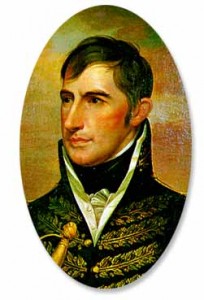
William Henry Harrison (1808-1816)
First of the new-style Prime Ministers, the Far-Right Harrison used his former military experience to build the Union's army into a formidable force. He served two full terms and then went back to being a Grand Marshal.

Napoleon Bonaparte (1816-1824)
Considered one of the finest American soldiers in history, the Corsican immigrant founded the Corsican Volunteers and was the leading figure in the promotion of Corsican, or guerrilla, tactics. An indomitable politician, he served as Viceroy under Harrison and was the founder of the Conservative Party. He became a famous writer of novels and political pamphlets after serving two terms. His most famous novel was The Adventures of Tucker le Finn, a story about a boy growing up in New Orleans.
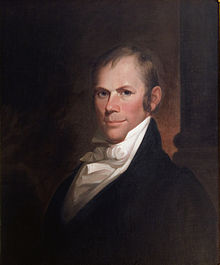
Sir Henry Clay (1824-1828)
Former Minister of the House of Congress and Bonaparte's Viceroy, the Conservative Party member further pushed Andrew I's power to the max. A spellbinding speaker, he later became Minister of Propaganda after serving one term, claiming he wanted to get out of actual politics.
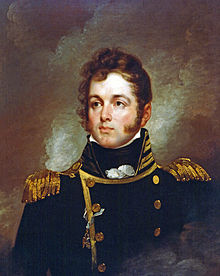
Lord Oliver Hazard Perry (1828-1836)
Former first Lord Secretary of the Navy, Lord Perry belonged to the Liberal Party. The Liberal Party believed in a slightly less all-encompassing government, but still almost worshiped the King. One of the few non-far-right to serve as Prime Minister, he was chosen mainly because of his outstanding naval career.
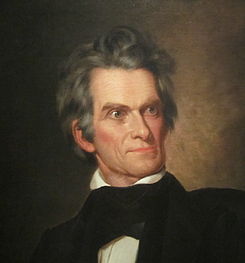
Duke John C. Calhoun (1836-1844)
Calhoun marked the return to the Conservative Party and pushed hard to wipe out the Indians and crush political dissidents.
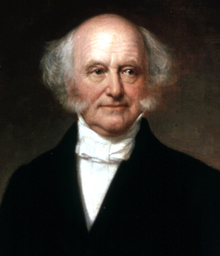
Martin Van Buren (1844-1848)
A terrible administrator, Van Buren was chosen mainly because of his friendship with Andrew I. His poor job in office may have led to Andrew I's death. He gave a bad name to the Liberal Party.
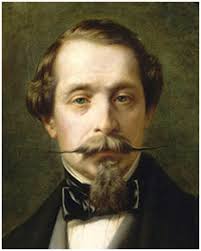
Duke Louis Napoleon Bonaparte (1848-1856)
Louis was Napoleon Bonaparte's nephew and the first Prime Minster chosen by Andrew Jackson's nephew, Andrew II. In 1840, he took his uncle's beliefs and combined them into the extreme Bonapartist League, sometimes called the Napoleon Party.
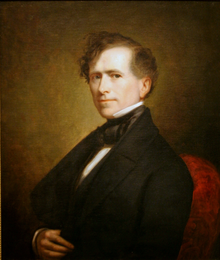
Franklin Pierce, First Baron Hillsborough (1856-60)
A staunch Bonapartist, Pierce was also the first of a new type of nobility: a Baron. A Barony was created when a duchy grew very large and included three or more counties. Dukes either bought the land or were given the land by the government. He decided not to run for a second term because he had grown tired of politics. He picked up writing and published a memoir and several books on the Roman Empire.
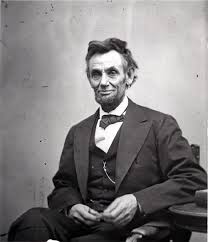
The Honourable Lord Lincoln (1860-1868)
One of the most respected politicians in American History, the Bonapartist was a native of Wabash and was considered the first "Folksy" Prime Minister. He was the last Prime Minister to serve Andrew II and took the side of Alexander during the Civil War. He died in 1870 of a bone disease, long before the War ended.
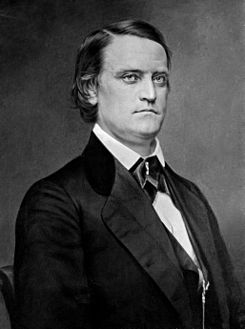
Lord (John C.) Breckenridge, First Baron Lexingtown (1868-1872)

John T. Hoffman (1872-1874)
(Removed from Office)
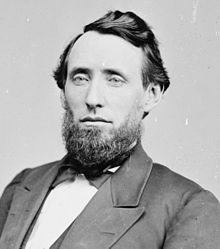
Shelby M. Cullom (1874-1882)
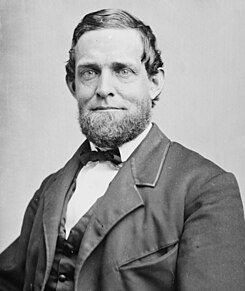
Lord Shuyler Colfax (1882-1890)
Prime Ministers

William Henry Harrison (1808-1816)
First of the new-style Prime Ministers, the Far-Right Harrison used his former military experience to build the Union's army into a formidable force. He served two full terms and then went back to being a Grand Marshal.

Napoleon Bonaparte (1816-1824)
Considered one of the finest American soldiers in history, the Corsican immigrant founded the Corsican Volunteers and was the leading figure in the promotion of Corsican, or guerrilla, tactics. An indomitable politician, he served as Viceroy under Harrison and was the founder of the Conservative Party. He became a famous writer of novels and political pamphlets after serving two terms. His most famous novel was The Adventures of Tucker le Finn, a story about a boy growing up in New Orleans.
Sir Henry Clay (1824-1828)
Former Minister of the House of Congress and Bonaparte's Viceroy, the Conservative Party member further pushed Andrew I's power to the max. A spellbinding speaker, he later became Minister of Propaganda after serving one term, claiming he wanted to get out of actual politics.

Lord Oliver Hazard Perry (1828-1836)
Former first Lord Secretary of the Navy, Lord Perry belonged to the Liberal Party. The Liberal Party believed in a slightly less all-encompassing government, but still almost worshiped the King. One of the few non-far-right to serve as Prime Minister, he was chosen mainly because of his outstanding naval career.
Duke John C. Calhoun (1836-1844)
Calhoun marked the return to the Conservative Party and pushed hard to wipe out the Indians and crush political dissidents.

Martin Van Buren (1844-1848)
A terrible administrator, Van Buren was chosen mainly because of his friendship with Andrew I. His poor job in office may have led to Andrew I's death. He gave a bad name to the Liberal Party.
Duke Louis Napoleon Bonaparte (1848-1856)
Louis was Napoleon Bonaparte's nephew and the first Prime Minster chosen by Andrew Jackson's nephew, Andrew II. In 1840, he took his uncle's beliefs and combined them into the extreme Bonapartist League, sometimes called the Napoleon Party.

Franklin Pierce, First Baron Hillsborough (1856-60)
A staunch Bonapartist, Pierce was also the first of a new type of nobility: a Baron. A Barony was created when a duchy grew very large and included three or more counties. Dukes either bought the land or were given the land by the government. He decided not to run for a second term because he had grown tired of politics. He picked up writing and published a memoir and several books on the Roman Empire.
The Honourable Lord Lincoln (1860-1868)
One of the most respected politicians in American History, the Bonapartist was a native of Wabash and was considered the first "Folksy" Prime Minister. He was the last Prime Minister to serve Andrew II and took the side of Alexander during the Civil War. He died in 1870 of a bone disease, long before the War ended.

Lord (John C.) Breckenridge, First Baron Lexingtown (1868-1872)

John T. Hoffman (1872-1874)
(Removed from Office)

Shelby M. Cullom (1874-1882)

Lord Shuyler Colfax (1882-1890)
(As you can see, neckbeards are all the rage in this America.  Mind, the majority of these men being born after the founding of the URAS would mean they wouldn't necessarily hold the same beliefs as in real life. For instance, Abraham Lincoln might be pro-slavery or isolationist. Others, like Hoffman, might not be exactly like real life, but they will have references to their real lives. I prefer not to use fictional people in my AH unless absolutely necessary.)
Mind, the majority of these men being born after the founding of the URAS would mean they wouldn't necessarily hold the same beliefs as in real life. For instance, Abraham Lincoln might be pro-slavery or isolationist. Others, like Hoffman, might not be exactly like real life, but they will have references to their real lives. I prefer not to use fictional people in my AH unless absolutely necessary.)
Last edited:
CHAPTER XVIII
History Repeats Itself: Cain and Abel Nouveau

The Catholic Grand Duke Andrew III and the Presbyterian Viscount Alexander I
History Repeats Itself: Cain and Abel Nouveau
The Catholic Grand Duke Andrew III and the Presbyterian Viscount Alexander I
When Andrew II had the first of his several serious health problems, a succession crisis occurred. The rightful heir, Andrew III, was revealed to be a Catholic. Evidently, he had spent too much time with his French mother Marie, King Louis-Joseph's daughter. He had also been on several trips to France and Austria, where he was further alienated from his father and great uncle's Presbyterianism. Of course, Marie professed Protestantism to be the American queen, but deep down, she had remained a Catholic. In 1862, following Andrew II's first heart attack, Andrew III's young brother Viscount Alexander I, who had spent much more time with Andrew II and much less with his mother, requested that his sister Mary, a staunch Presbyterian, be crowned queen and ruler instead of Andrew III. Mary soon met an "unfortunate accident" when the axles came off her coach during an afternoon ride in the country. The coach rolled down a hill, shattering into thousands of pieces. Mary, of course, was dead, blood thoroughly soaking her torn royal dress. The gruesome corpse was photographed, but the army soon confiscated the negatives before they could be developed. Her death and ensuing funeral brought about further decline in the King's health. Over the next six years, Andrew III and Alexander grew to hate each other. The American public heavily disliked Andrew's Catholicism. There was no actual official religion in the Union, but anyone who wanted to amount to anything was Protestant. Despite secret Catholic services, the Bonaparte political dynasty had converted to the Episcopalian Church. By the time of Napoleon's great nephew, they were actual Protestants. In the South, the Catholic majority in Louisiana minded its business.
Alexander suspected foul play in his sister's death, and thereafter resolved to prevent his brother from being king.
Things turned openly confrontational on July 4th, 1866, when an assassin shot Alexander while attending a play in Philadelphia. His guards immediately killed the attempted assassin, and Alexander had fortunately only received an arm wound on the left elbow. However, it became infected and resulted in the amputation of the limb from the elbow down. Alexander had had enough. A secret war erupted between the cronies and assassins serving the two princes.
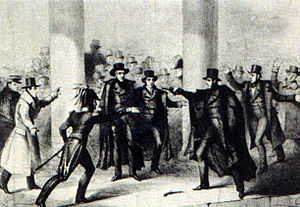
Finally, on April 22nd, 1868, Andrew II died from his third heart attack. The public braced itself. On June 1st of the same year, Andrew III was crowned in Coronation Hall. His Virginian wife Caroline, another secret Catholic, became the queen. Alexander was not present. He was actually in New York City, seizing his brother's assets there and asking the army to join him in a coup. He promised that he would allow elections for prime ministers and better pay for the troops. Many agreed. Many did not, feeling a loyalty to the King no matter what denomination. Many of the armies of the original Thirteen Colonies joined Alexander in the fight for Protestantism. The Catholic South, with its massive Hispanic population, went for Andrew. In the end, it was mostly a North-South divide. The Prime Minister, Lord Lincoln, went over to Alexander, further legitimizing him. Just when it seemed there would be a very short war, France stepped in. King Louis XVII announced total support for Andrew, as did Austria and the Pope. Germany, Prussia, and Britain went for Alexander. Victoria disliked America, but wanted to prevent it from going Catholic.
Andrew fled South to New Orleans, which he established as his capitol. Philadelphia fell to Alexander on December 25th, 1868. The American Civil War had begun.
Lincoln's term was up as Prime Minister, and Alexander chose Lord Breckenridge, First Baron Lexingtown to replace him. Breckenridge, a western Virginia native greatly help secure part of the state for Alexander. Since the other part still belonged to Andrew, Alexander decided to break it up into Virginia and Kaintuck, with Lexingtown being Kaintuck's capital.
1869 was when things hit the fan. French royal troops bulked up Andrew's army as he recruited more. The Hispanics came from Mexico and South America in droves. The USLA was finally collapsing, and they saw an opportunity for safety under Andrew. Over 30% of the Southern army was Hispanic.
During the first engagements, much confusion abounded as to who was the enemy. Both sides wore blue and both carried the Royal Standard into battle. After several friendly fire incidents, Andrew adopted the Bison Flag and required his troops to dye their uniforms gray or green. White was also accepted, and white coats were common supplies from France.
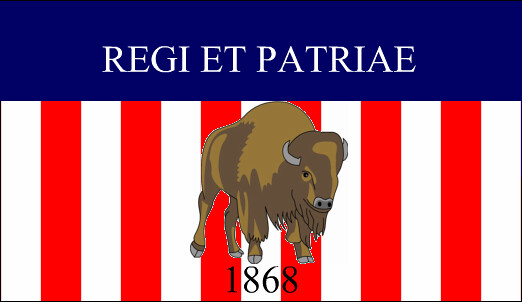
(A new map is forthcoming...)
Alexander suspected foul play in his sister's death, and thereafter resolved to prevent his brother from being king.
Things turned openly confrontational on July 4th, 1866, when an assassin shot Alexander while attending a play in Philadelphia. His guards immediately killed the attempted assassin, and Alexander had fortunately only received an arm wound on the left elbow. However, it became infected and resulted in the amputation of the limb from the elbow down. Alexander had had enough. A secret war erupted between the cronies and assassins serving the two princes.

The April Assassination Attempt on Viscount Alexander
Finally, on April 22nd, 1868, Andrew II died from his third heart attack. The public braced itself. On June 1st of the same year, Andrew III was crowned in Coronation Hall. His Virginian wife Caroline, another secret Catholic, became the queen. Alexander was not present. He was actually in New York City, seizing his brother's assets there and asking the army to join him in a coup. He promised that he would allow elections for prime ministers and better pay for the troops. Many agreed. Many did not, feeling a loyalty to the King no matter what denomination. Many of the armies of the original Thirteen Colonies joined Alexander in the fight for Protestantism. The Catholic South, with its massive Hispanic population, went for Andrew. In the end, it was mostly a North-South divide. The Prime Minister, Lord Lincoln, went over to Alexander, further legitimizing him. Just when it seemed there would be a very short war, France stepped in. King Louis XVII announced total support for Andrew, as did Austria and the Pope. Germany, Prussia, and Britain went for Alexander. Victoria disliked America, but wanted to prevent it from going Catholic.
Andrew fled South to New Orleans, which he established as his capitol. Philadelphia fell to Alexander on December 25th, 1868. The American Civil War had begun.
Lincoln's term was up as Prime Minister, and Alexander chose Lord Breckenridge, First Baron Lexingtown to replace him. Breckenridge, a western Virginia native greatly help secure part of the state for Alexander. Since the other part still belonged to Andrew, Alexander decided to break it up into Virginia and Kaintuck, with Lexingtown being Kaintuck's capital.
1869 was when things hit the fan. French royal troops bulked up Andrew's army as he recruited more. The Hispanics came from Mexico and South America in droves. The USLA was finally collapsing, and they saw an opportunity for safety under Andrew. Over 30% of the Southern army was Hispanic.
During the first engagements, much confusion abounded as to who was the enemy. Both sides wore blue and both carried the Royal Standard into battle. After several friendly fire incidents, Andrew adopted the Bison Flag and required his troops to dye their uniforms gray or green. White was also accepted, and white coats were common supplies from France.

The Bison Flag of King Andrew III
(A new map is forthcoming...)
Last edited:
Alright, I want to make sure I have this strait. Andrew Jackson dies, and Andrew Jackson Donelson takes over. His son, Andrew III, married Marie of France, and he eventually became Catholic. His sister dies, and a blood war starts to happen between him and Alexander. Andrew Jackson Donelson dies, and the war starts. Sorry for the question, I just want to make sure I have it right 
And I love that you used a picture of Thomas Jackson as Andrew III
Nice list of Prime Ministers. Is it possible that some time in the future you could write a little paragraph for each, about their views, achievements in office, etc.
And will the American Civil War become a world war?
And I love that you used a picture of Thomas Jackson as Andrew III
Nice list of Prime Ministers. Is it possible that some time in the future you could write a little paragraph for each, about their views, achievements in office, etc.
And will the American Civil War become a world war?
Alright, I want to make sure I have this strait. Andrew Jackson dies, and Andrew Jackson Donelson takes over. His son, Andrew III, married Marie of France, and he eventually became Catholic. His sister dies, and a blood war starts to happen between him and Alexander. Andrew Jackson Donelson dies, and the war starts. Sorry for the question, I just want to make sure I have it right
And I love that you used a picture of Thomas Jackson as Andrew III
Nice list of Prime Ministers. Is it possible that some time in the future you could write a little paragraph for each, about their views, achievements in office, etc.
And will the American Civil War become a world war?
I love questions! So everyone understands, I'll put up this list:
#1: Andrew Jackson becomes the First King - 1796
#2: Andrew Jackson (Andrew I) dies, his nephew Andrew Jackson Donelson I (Andrew II) is crowned and weds King Louis-Joseph's daughter Marie, a Catholic - 1845
#3: Andrew II dies in 1868. His oldest son, Andrew Jackson Donelson II (Andrew III), the heir to the throne, had been secretly converted to Catholicism by his mother Marie.
#4 The American civil War begins in earnest - 1869
@Picture of Jackson: Haha, I wondered if anyone would notice.
@Prime Ministers: Yep, exactly what I wanted to do.
@World War question: Somewhat. More like the Seven Years War.
Last edited:
If you or anyone else has more questions, don't hesitate to ask. 
Added Prime Minister descriptions!
Added Prime Minister descriptions!
Share: